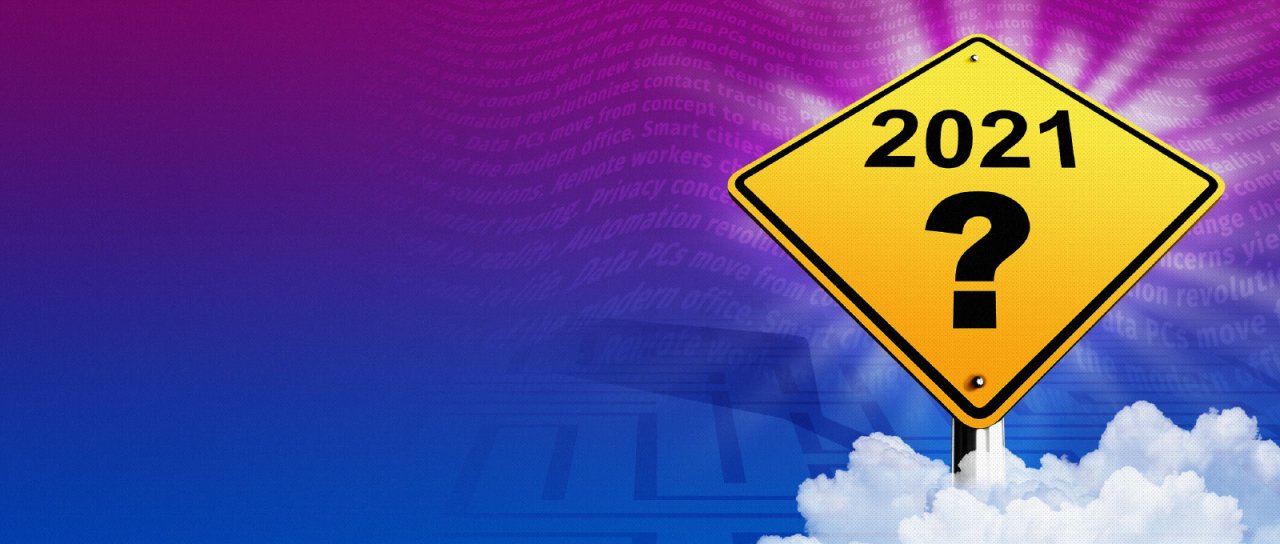2021 Predictions from our CTO of Asia, Pacific and Japan
Technology is positioned to serve as the foundation for the new normal.
As we venture into 2021, organizations will be looking for ways to recover from the pandemic and serve new consumers with reimagined business models. Just like IT helped organizations survive the crisis, technology is also positioned to serve as the foundation for the new normal. Here are five ways that technology will change over the next year:
Prediction 1: Data POCs move from concept to reality
Data and machine learning have been hyped topics for a while. Many companies have run proofs of concepts (POCs) for the collection of data into data lakes. But due to the difficulty of operationalizing data models, many projects have stopped there. When speaking to CTOs, I find many of these projects haven’t generated the desired outcomes, or that these CTOs just don’t know how to take the next steps. Yet, with the amount of investment in data collection and the potential derived from its ability to drive actionable business insights, accelerate product innovation and shape customer experiences, organizations can’t afford to wait on the sidelines.
In 2021, I see more POCs moving into production. Better tools and turnkey solutions for specific use cases from cloud providers are making it easier for teams with limited skill sets and resources to build and run complex models. For example, Amazon Polly and Amazon Lex take the heavy lifting out of enabling natural language processing (NLP) capabilities for self-service bots, voice-enabled applications and integrated voice and text experiences across a variety of languages. We’ll also see more partners provide data-centric services to help address skills gaps and accelerate development at the organization level.
Prediction 2: Automation revolutionizes contact tracing
COVID-19 has touched every industry and geography. Initially viewed as a sprint, to be over quickly, measures that we thought would be short-term are now becoming the new normal.
One of the strongest tools that communities can use to manage disease spread is contact tracing. Initially, contact tracing processes were manual, cumbersome and costly – manageable for the short term, but not sustainable for the long term.
Smartphones will play a larger role in contract tracing in 2021, as more and more applications come online that can integrate with smart phone data. Apple and Google started the trend early on by leveraging mobile data. We’ll begin to see more providers entering the market with solutions targeted at business with stronger security and industry-specific features. We’ve already seen our customers successfully repurpose existing IoT and machine learning technology for contact tracing. Governments, like New South Wales in Australia, are also leveraging technology, including QR codes, to track cases and notify persons who may have been exposed.
Prediction 3: Privacy concerns yield new solutions
Driven by the pandemic, the need for widespread contact tracing will amplify concerns about data privacy. As we share more information online, we’re becoming more conscious of what happens to our data. Is it shared? Is it secured? How can it be used? The Netflix documentary, The Social Dilemma, has provided the general population with even more insight around how deeply organizations leverage and track our data. As concerns rise, governments are also responding with a mix of regulatory actions that businesses need to integrate into current security strategies to avoid hefty fines and penalties.
However, because there’s so much concern about misuse, many people refuse to even install potentially beneficial government apps. Those same concerns impact how people view the use of workplace solutions that track time, record location and use biometric security. With the increasing reliance on applications for work, finances and healthcare, businesses need to focus on both protecting data and ensuring that owners can control the use of their personal data.
Innovators have an opportunity in 2021 to develop solutions that regulate data privacy within devices and applications while adjusting to the growing number of local, regional and national privacy regulations, like, CCPA in California, GDPR in Europe and POPI in South Africa.
Prediction 4: Remote workers change the face of the modern office
Remote workforces saved businesses at the height of the crisis by staying home and staying productive. For many organizations, the work from home model is here to stay, and that introduces a whole range of opportunities and risks. As remote working goes mainstream, organizations will have to ask:
- How do we equalize the experience for in-office and remote employees?
- How do we make video interaction more personal?
- How do we ensure employees are safe? What are our occupational health responsibilities?
- How do we continue to drive innovation?
- How do we adapt brainstorming, team-building and other traditionally face-to-face activities?
All of the above are opportunities for innovation. Things like augmented reality and virtual huddle rooms can create shared workspaces for collaboration and whiteboarding. OHS compliance training can be performed virtually. IoT and automation can be integrated to help with safety audits.
Some of these challenges will be solved organically as people stumble across solutions. In 2021, businesses will seize this opportunity to develop technology to enhance remote workplaces. I expect to see a greater volume and sophistication of integration between cloud systems to create experiences that more closely mirror the traditional office.
Prediction 5: Smart cities come to life
There are pockets of smart city innovation all over the world. The term “smart city” is just a fancy way to describe the combination of technology and data to do things smarter – safer, less expensive, more efficient. IoT is a driving enabler for smart technology and is growing rapidly. APJ represents about a third of the global IoT market.
As businesses and governments become more familiar with IoT, expect to see more smart solutions. In the U.S., we’ve been involved in POCs with fire fighters who want to use IoT devices to stream real-time video to a centralized control hub where fire-fighting decisions are made and communicated. We’ve also worked with organizations to understand pond capacities and drainage intervals for optimal ecological outcomes.
In 2021, smart cities will get a boost from data projects that involve moving from POC to production. As these data projects go live, governments will have a better view of how they can use data and technology, like IoT and 5G, to build more resilient cities.

Cut Straight to the Tech Trends That Matter
About the Authors

CTO, APJ
Emma Pudney
Emma has over 20 years’ experience in the tech industry. After technical roles such as night shift service desk operator, Windows administrator, DBA, Ad platform SME and technical project manager, Emma quickly worked her way up to management and leadership roles. She built and drove teams to deploy and support at scale web platforms, build cloud management software back before cloud in Australia was a thing, and provide cloud consulting to some of Australia’s largest organizations. Prior to becoming the APJ regional CTO, Emma built out the Professional Services and AWS Practices in Australia. She subsequently went on to lead technical Rackers across three teams: Architecture, Public Cloud Build and Professional Services for APJ. She contributes to global public cloud, professional services and product strategies and is a member of the global CTO technical council. She scoped and lead the technical integration for the Rackspace Technology partnership with KDDI in Japan. Emma created and locally developed Rackspace Technology’s Service Blocks™ offering, which offers organizations around the world a new way of consuming cloud services for better ROI and less wastage. Emma was recognized for her innovation by the industry when awarded the ARN Women in ICT, Winner Innovation, 2019. Emma is a mum to an 8-year-old and a 7-month-old and is an active advocate for women in tech.
Read more about Emma PudneyRelated Topics


